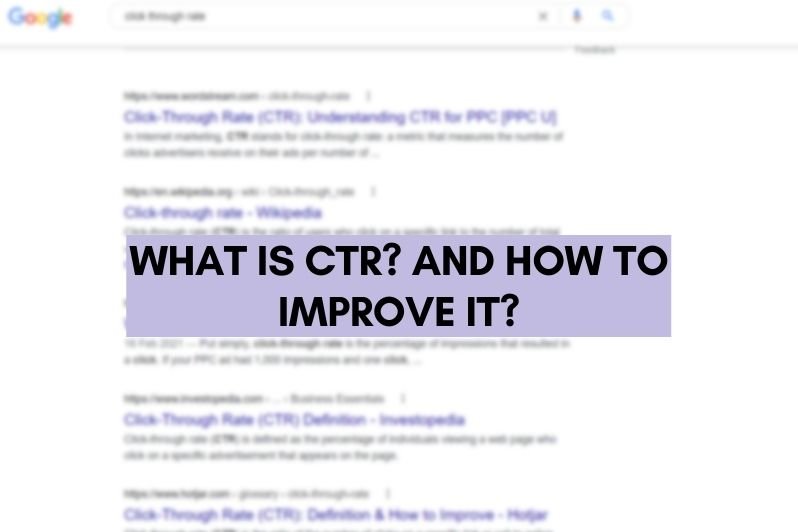The click-through rate (CTR) is a crucial topic in search engine optimization. The most basic explanation is that the click-through rate is the percentage of individuals who click on your ad after seeing it. (In mathematics, CTR = Clicks/Impressions.) Your CTR is one of the most imperative components of your digital marketing strategy. Even if you have an amazing content, there won’t be any use if it is not reaching the end users.
CTR in SEO
In SEO, your CTR will decide whether your page title meta description works or not. Google (and, more broadly, all search engines) may be thought of as a monarchy in which individuals vote by clicking. As a result, your CTR will be vital for success.
Your success with AdWords and organic SEO can be improved in three ways:
- Increasing the figure of people who see your ad or snippet
- Increasing the number of people who click on your ad or snippet
- Increasing the number of people who become a customer (i.e., convert) on your landing page.
In other mean, search engine marketing is a “limited system.” The CTR is one of such limitations.
Improving CTR in SEO
Craft Compelling Title Tags and Meta Descriptions
The relevance of using keywords in title tags and meta descriptions as a part of onpage seo has waned. Keyword stuffing is not a part of any seo content strategy now. As a result, we must improve our title tags and meta descriptions to appeal to users. Not all of your competitors will put in the effort to create compelling title tags and meta descriptions. Although their importance as a ranking element has waned, they can still enhance CTR and drive organic visitors.
- Perform a few searches using your main term. Take a tough look at few PPC adverts that appear. Some of these combinations are more precise than the natural findings.
- It’s still crucial to include your main keyword in your title tags.
- Follow up with Action Words.
- Add Keyword Variations and Secondary Keywords Have an Accurate URL Structure.
On the SERP, users may see more than just the title tag and meta description; they can also view the layers of a page’s URL. The page structure of where you want that page to live may usually be easily adjusted in most content management systems. It may not appear to be a big deal, but showing consumers where they’re heading can help them trust that your listing will deliver relevant information to their search.
Implement Structured Data to Have Rich Snippets on SERPs
Structured data from schema.org has a big SEO advantage. It not only informs search engines about the topic of your website, but it also provides users with a better experience immediately on the SERP. As a result, your organic click-through rates may improve.
This website includes a star rating, an image, preparation time, and more. All of this information is immediately beneficial to end-users and has the potential to increase CTR.
SEOs shockingly underutilize schema and structured data, which is understandable given how time-consuming it is to generate, test, and distribute error-free structured data.
Aspects of SERP Listing
Because there are so many aspects that make up a SERP listing (title tags, meta descriptions, etc.), it’s crucial to have a sense of how the search listing will look.
if title tags and meta descriptions exceed a specific character count, they are truncated, which means readers aren’t receiving the whole picture of what your content is about. (As a result, they are less inclined to click on your result.)
